Decade-long quest to create the perfect tomato yields the purple, umami “Yoom”
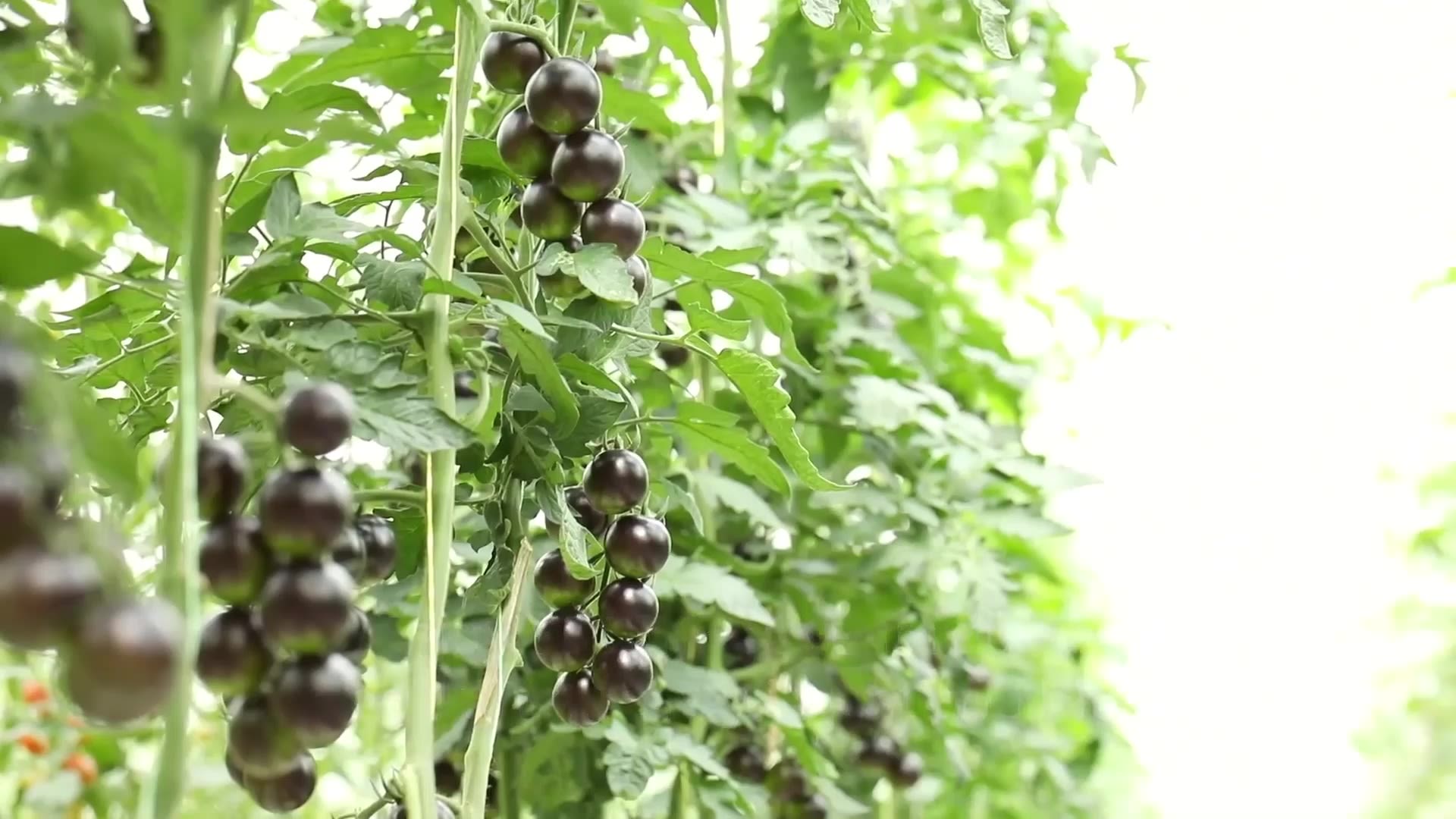
Produce aisles in many parts of the world are becoming more colorful, as a new, deep purple cocktail tomato makes its way onto shelves. Meet the Yoom, which bursts with a uniquely savory flavor and derives its distinctive color from an abundance of antioxidants.
The Yoom was named for its “umami” taste—a term rooted in the Japanese word for “delicious.” Umami is often described as savory, rich or meaty; it is considered the fifth basic taste, alongside salty, bitter, sweet and sour.
Last fall, a jury of 200 leading chefs and sommeliers assembled by the International Taste Institute in Brussels, Belgium, awarded the Yoom the prestigious “Superior Taste Award.” The tomato received three stars, the highest score available, for its flavor, texture, aroma and appearance.
The Yoom also captured the prestigious gold award at the 2020 Fruit Logistica Innovation Awards in Berlin, Germany, which recognizes the 10 most remarkable innovations in the international fresh fruit and vegetable industry.
Syngenta Seeds, whose Vegetable Seeds division developed the Yoom, did not simply stumble upon this prize-winning innovation. Rather, it was the result of more than a decade of meticulous work, in which traditional breeding methods were employed to mix and match material from thousands of existing tomato varieties. The process is more art than science, though it involves a great deal of both. The goal: to create a tomato that’s delicious, nutritious and beautiful enough to entice consumers—and also friendly to growers, shippers and the environment.
“We knew there was room to expand the market by introducing a tomato containing an abundance of antioxidants, but it’s not just about creating the Ferrari of tomatoes from a consumer’s perspective,” says Jeremie Chabanis, Head of the Syngenta Value Chain. “We needed to develop a variety that would grow well, ship easily and have a long shelf life—ensuring as little waste as possible.”
A breeder who knows growers
When it comes to developing new tomato varieties, Syngenta’s secret weapon is Luis Ortega, a biologist who has been the company’s chief tomato breeder for the past 25 years. Ortega lives in Almeria, Spain, a city on the Mediterranean coast that has the highest concentration of greenhouses in the world. He is uniquely attuned to the needs of farmers: His father was one, and his brother still is.
When Luis Ortega was growing up, the tomato universe was much smaller. “My father used to grow mainly two types of tomato: one was big and one was smaller,” he recalls. “When I started working at Syngenta, our Italian customers were unusual because they bought four different types of tomato: one for cooking, one for salads, one for sauce and one for pizza. Now, of course, there are hundreds of tomato varieties sold around the world.”
Ortega started working with Syngenta 34 years ago, advising the company’s vegetable breeders and overseeing crop trials. He began specializing in tomato breeding nine years later. “Breeding tomatoes is a passion for me,” he says. “I enjoy the challenge of crossing different typologies to identify new types of tomatoes that can help growers produce better crops that also satisfy consumers’ desire for new, tastier products.”
Topping the Kumato
Pre-Yoom, Ortega’s signature creation was the Kumato—a succulent brown tomato that was the first consumer brand launched by a seed company when Syngenta introduced it 20 years ago. The Kumato continues to be one of the most popular tomato varieties worldwide.
Ortega traces the Yoom’s origins to 2008, when he and his Syngenta Seeds colleagues began conversations around creating a tomato packed with more nutrients than anything else on the market.
Over the course of a decade, Ortega used traditional breeding methods to mix and match existing varieties. He estimates drawing on “thousands” of varieties over the years, as he selected plants that possessed the different features he sought to cultivate in the new breed. Ortega pollinated the flowers by hand, using tweezers and small vibrating devices to transfer pollen from one variety to another.
The process involved the work of Syngenta scientists, who studied the chemical composition of each new rendition to gauge its sweetness, acidity and nutritional composition. (The Yoom, they found, has higher concentrations of anthocyanin and carotenoids, which are potent antioxidants, than red tomatoes. It is also high in vitamin C, magnesium and potassium content.)
The process required expertise in the qualities important to growers and traders, like crop yield, adaptability to different climate conditions and shelf life (also an important consideration in the context of sustainability and waste reduction).
Patience was another critical ingredient, as Ortega and his team waited for each experimental variety to grow and ripen. Along the way came plenty of varieties that were memorable, but not marketable.
One was brimming with nutrients and gorgeous to behold, but bitter. Another variety was delectable, tasting almost like a tiny melon, but produced too few fruits per plant to be feasible for growers. A third rendition was tasty but “completely green” inside and out, Ortega recalls, saying, “Gaining consumers’ acceptance would have been quite difficult.”
Picking the winner
Once Ortega landed on 10 potentially winning hybrids, Syngenta conducted a trial with growers around the globe, including the Netherlands, Canada, Mexico, Australia and Japan. When the two-year trial concluded, Yoom was selected as the winner.
Yoom tomatoes are now available throughout most of Europe as well as in Australia, Japan, Korea and, most recently, China. Soon, they will also be available in North America. Globally, Yoom sales are expected to be given a boost by the restaurant industry, as acclaimed chefs start to incorporate the unique tomato into their menus.
Back home in Almeria, Ortega’s work was not complete until he convinced two key stakeholders that they should make room on their plates for the Yoom: His wife, Carmen, and daughter, Laura, 27, who had long been partial to the Kumato.
The recipe that won them over: a simple salad featuring sliced Yooms, drizzled with olive oil, sprinkled with fresh Parmesan and garnished with arugula leaves. “I can tell you that if you try that, you’ll get a very refreshing salad with a strong umami taste,” Ortega says.
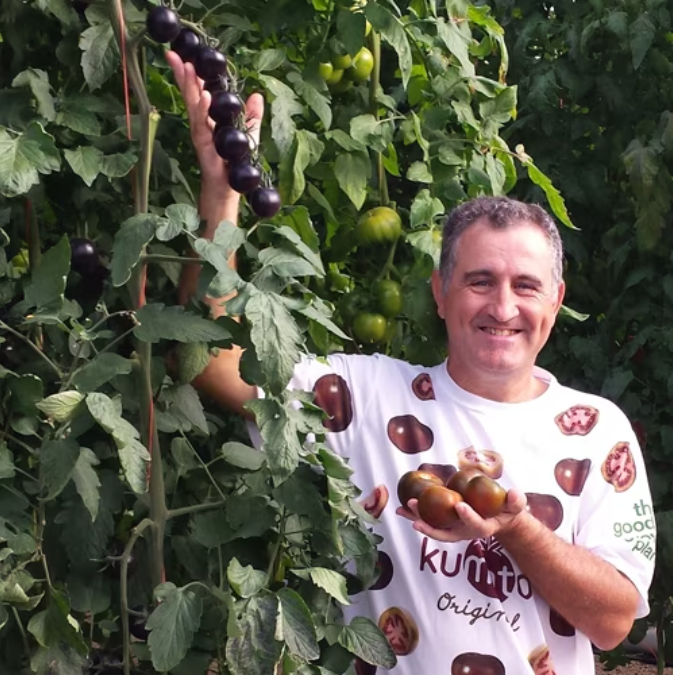
Tomato breeder Luis Ortega developed the Yoom over more than a decade, using traditional hand-pollination techniques to combine material from thousands of existing tomato varieties.
Tomato breeder Luis Ortega developed the Yoom over more than a decade, using traditional hand-pollination techniques to combine material from thousands of existing tomato varieties.
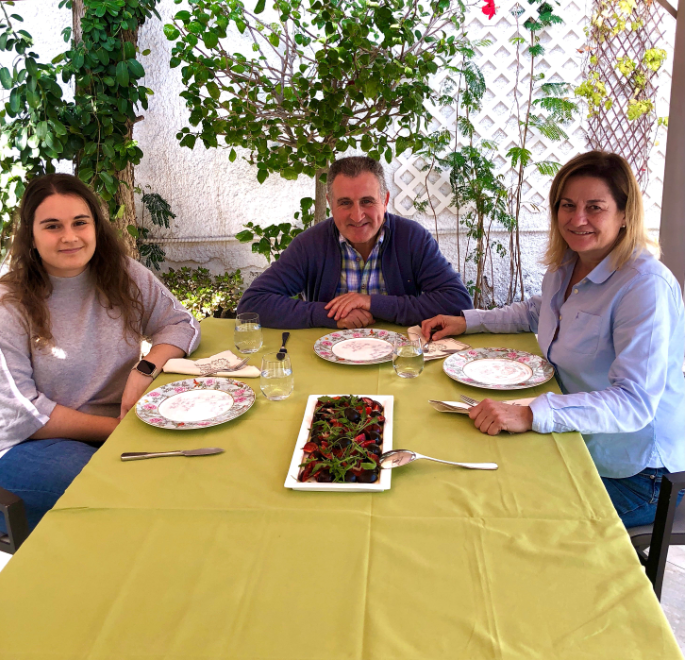
Luis Ortega at home in Almeria, Spain, with his daughter Laura, wife Carmen, and the family’s signature Yoom salad.
Luis Ortega at home in Almeria, Spain, with his daughter Laura, wife Carmen, and the family’s signature Yoom salad.
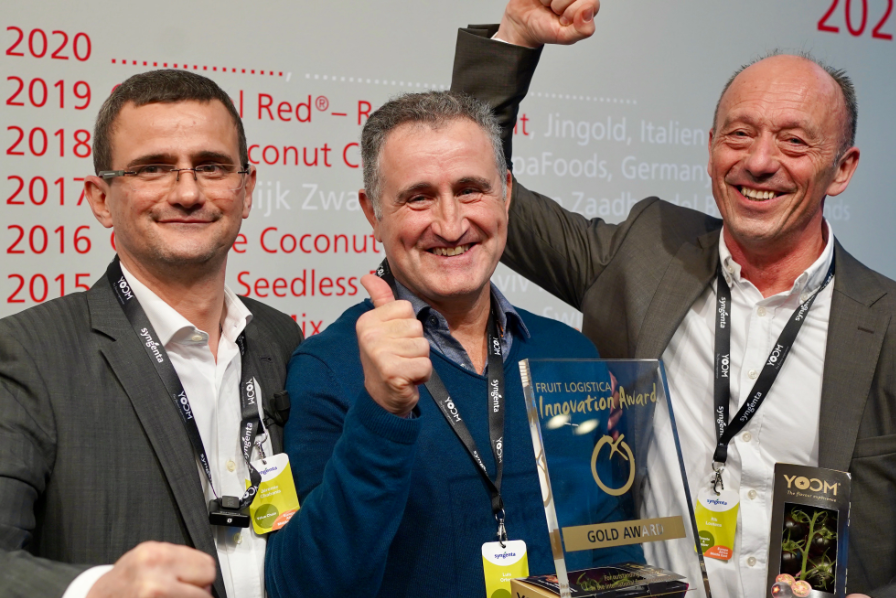
Ortega, flanked by Syngenta colleagues Jeremie Chabanis (left) and Rik Lootens (right), after the Yoom won the prestigious gold award at the 2020 Fruit Logistica Innovation Awards in Berlin. The awards recognize the 10 most remarkable innovations in the international fresh fruit and vegetable industry.
Ortega, flanked by Syngenta colleagues Jeremie Chabanis (left) and Rik Lootens (right), after the Yoom won the prestigious gold award at the 2020 Fruit Logistica Innovation Awards in Berlin. The awards recognize the 10 most remarkable innovations in the international fresh fruit and vegetable industry.
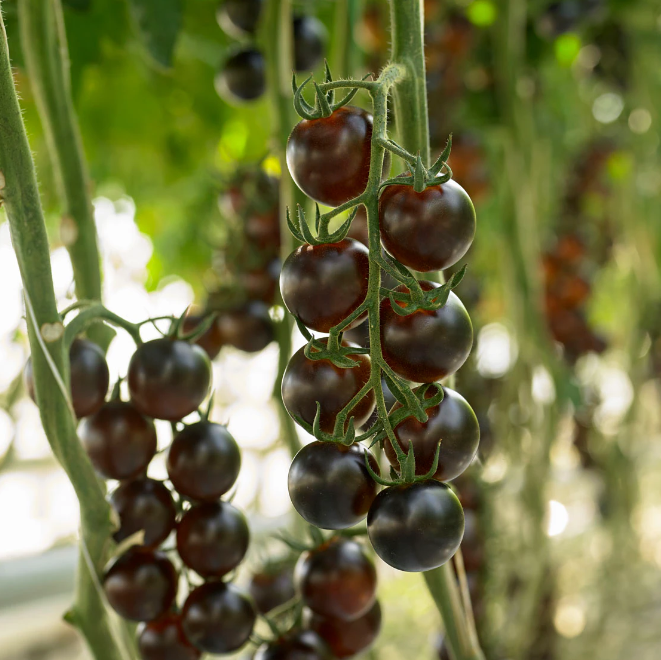
It took Syngenta Seeds a decade to breed a new tomato variety that would not only entice consumers, but also be friendly to growers, shippers and the environment.
It took Syngenta Seeds a decade to breed a new tomato variety that would not only entice consumers, but also be friendly to growers, shippers and the environment.

